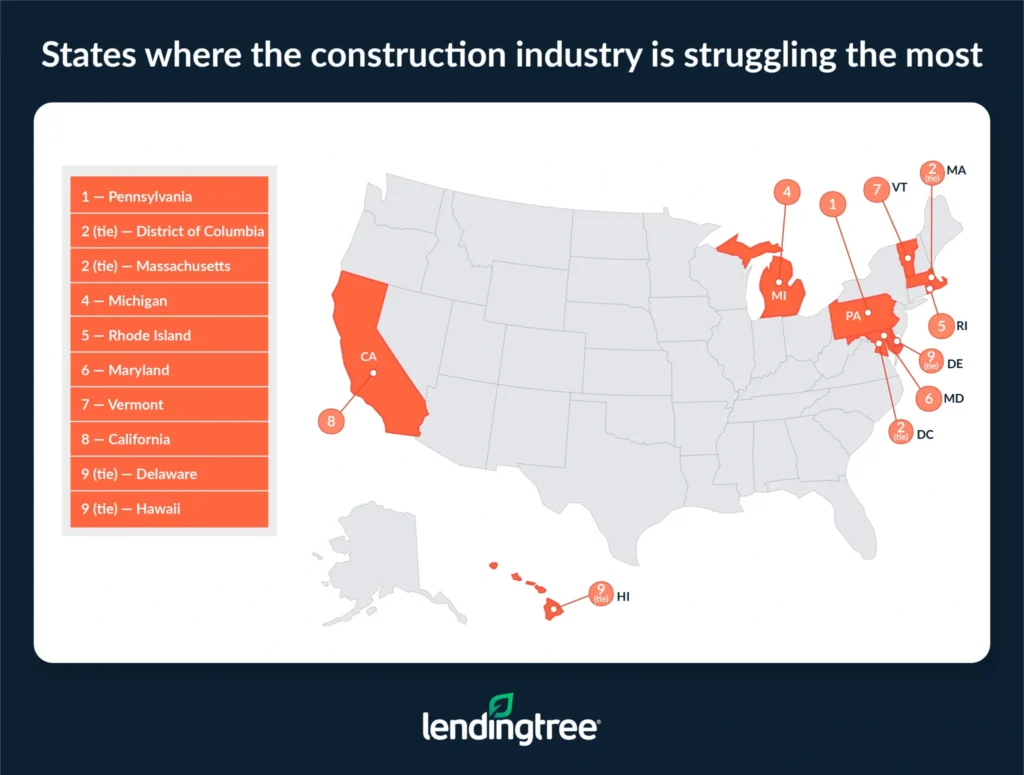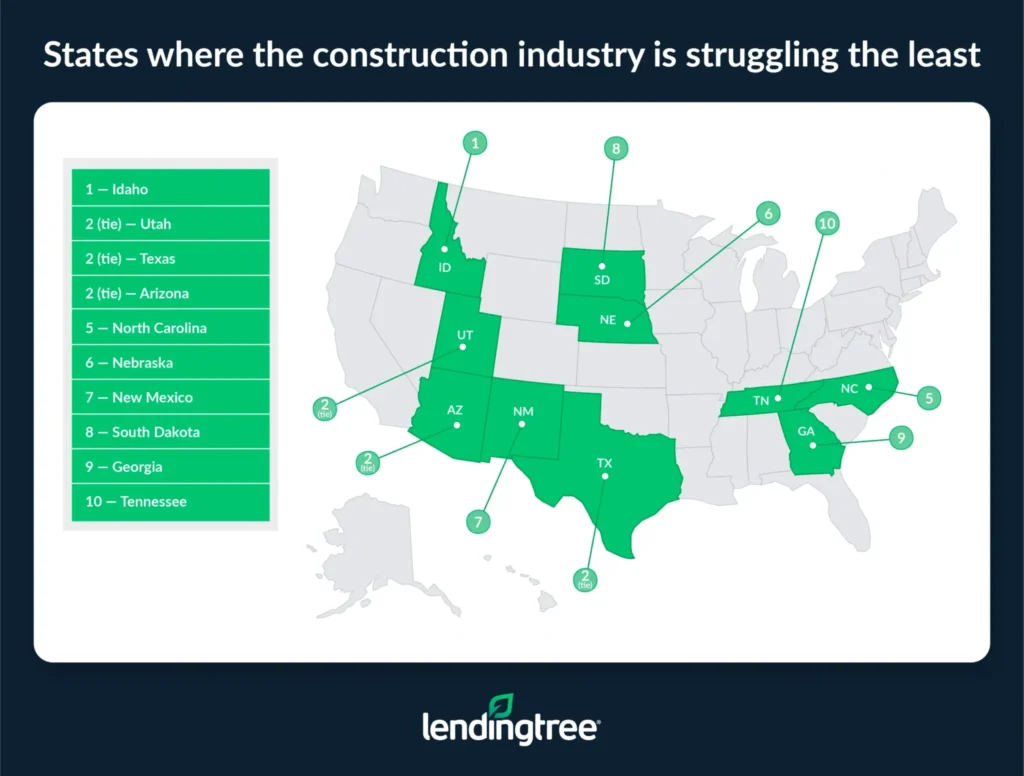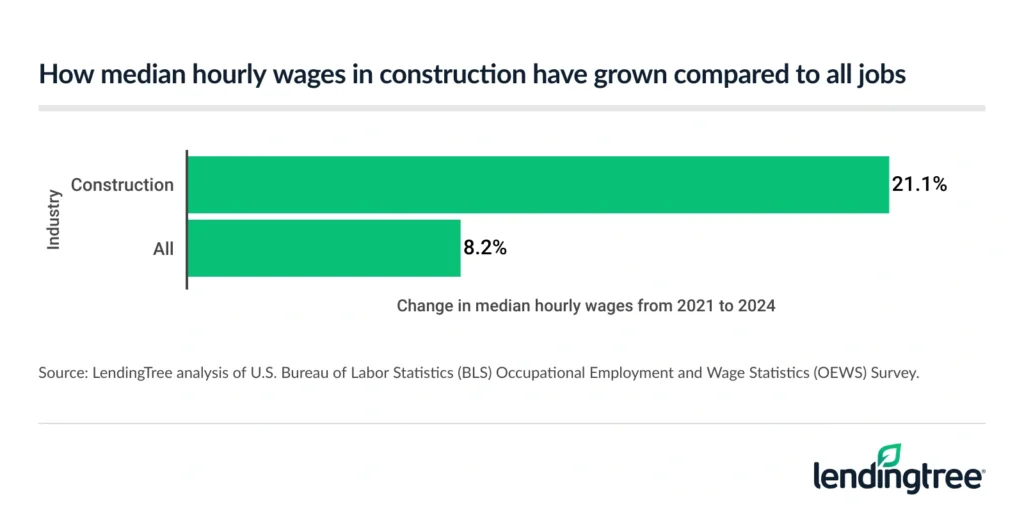Construction wages in the U.S. have surged since 2021, rising more than twice as fast as average earnings across all industries. According to a LendingTree analysis, median hourly pay for construction workers increased by 21.1% between 2021 and 2024, a jump from $23.18 to $28.06. In comparison, wages across all jobs rose only 8.2% in that same time period.
While pay growth might seem like a win for workers, analysts say it also signals a serious imbalance. As demand for new buildings, infrastructure projects, and housing continues to climb, employers are struggling to find enough skilled labor. In some states, that pressure is even more severe, with rising wages and stagnant job growth suggesting that companies can’t fill positions fast enough.
Key Findings
Pennsylvania ranks as the most strained state for construction. Wages in its construction sector rose far faster than in other industries, and job growth in the field lagged well behind overall employment gains. From 2021 to 2024, construction jobs in the state increased by just 0.4%, while overall employment rose 7.7%. That gap, combined with one of the lowest new construction permit rates, points to major workforce shortages.

The District of Columbia and Massachusetts also rank among the most challenged. In D.C., construction jobs actually declined during the three-year period, even as other sectors grew. Massachusetts showed a large wage gap between construction and other industries, suggesting labor is hard to come by.
By contrast, Idaho is a national bright spot. There, construction employment grew rapidly (more than double the state’s overall job growth), while wages rose at a slower pace. This indicates that the industry is hiring without having to offer major pay hikes, a sign of a healthier balance between supply and demand. Idaho also led the country in new housing permits per 1,000 existing units, showing strong building activity.

Utah, Texas, and Arizona also ranked among the healthiest states for construction, with fast job growth and strong housing demand.
Despite uneven conditions, the U.S. Bureau of Labor Statistics expects construction jobs to grow by nearly 5% through 2033. That demand, however, will require hundreds of thousands of new workers in the next two years alone.







